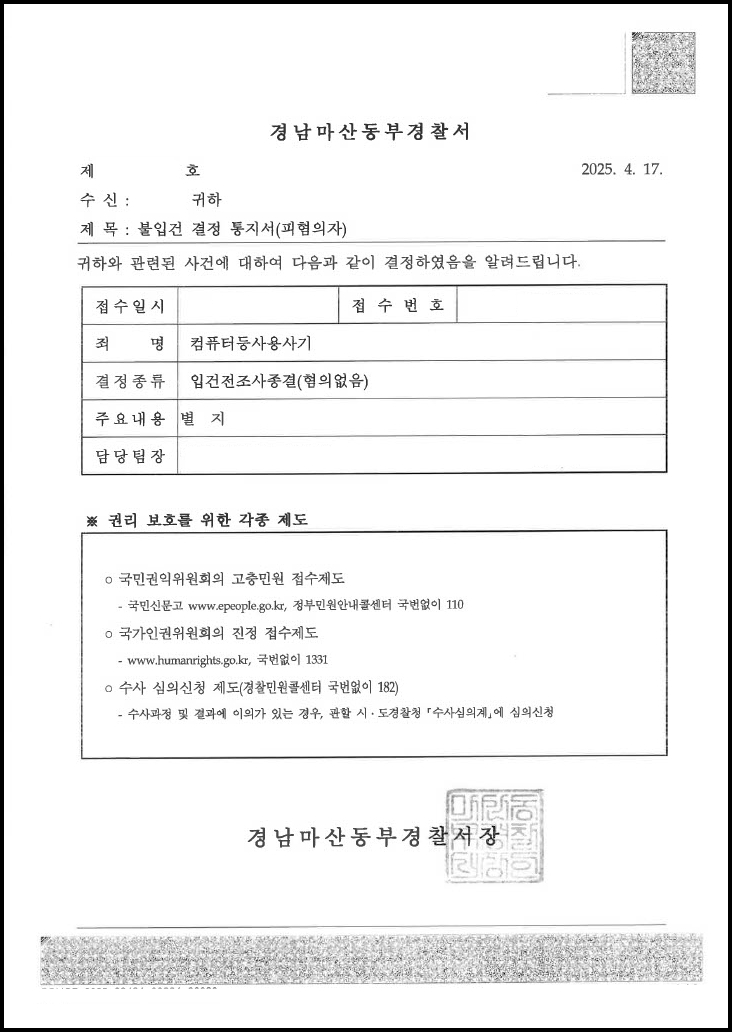Overview of the incident
A client who was struggling to make ends meet was tricked into using his account by an imposter posing as a financial institution employee while looking for a loan online. The imposter instructed the client to wire money to a specific account and transfer it to another account as part of a "working loan" process to improve her credit.
The client followed the instructions, believing it to be part of the normal loan process, but it was actually a process to move funds for a voice phishing scam, and the client came to us when he was being investigated for computer use fraud.
Case issues
The main issues in this case were whether the client provided his account to the criminal enterprise with knowledge that it was engaged in voice phishing, and whether the client's conduct constituted an element of computer use fraud.
Assistance from Ongang
From the outset of the case, Ong Kang's defense team began a thorough legal review and fact-finding to address the client's injustice.
1. allege the elements of computer use fraud are absent
The defense vigorously argued that the client's actions were merely transferring money deposited into the account as instructed and did not constitute the elements of the crime of computer use fraud, such as entering false information or fraudulent commands into a computer or other information processing device.
2. Calling out an unrecognized voice phishing engagement
We emphasized that the client was a young man with limited social experience who was desperate to obtain a low-interest loan due to living expenses and was duped by a mystery caller into believing that it was part of a "work loan" process, which led to this case. We emphasized that he was unaware that he was participating in a fraudulent activity and did not expect that his account would be used to commit a crime.
It was also made clear that the client did not derive any financial benefit from the transaction.
3. amicable settlement with the victim
The lawyer personally contacted the victim, explained the client's injustice, sincerely apologized, and graciously repaid the full amount of the damages. This resulted in a no-contest plea from the victim, which was submitted to the investigating agency, demonstrating the client's sincere remorse and efforts to repair the damage.
4. present a quasi-innocent case
We provided the authorities with a number of case law cases in which people similar to our client were acquitted of aiding and abetting voice phishing under similar facts, and strongly argued that our client had no criminal intent.
5. cooperate with the investigation in good faith
Gained the trust of law enforcement by helping the client to be diligent in the investigation and transparent with all the facts.
Results
Due to the firm's systematic legal arguments, the client's compelling circumstances, and amicable settlement efforts with the victim, the investigating agency carefully reviewed the evidence submitted and the defense's submissions and determined that the client's participation in the commission of computer fraud was not credible. As a result, the client was not formally charged and the preliminary investigation was closed with "no charges.
Case outcome materials



